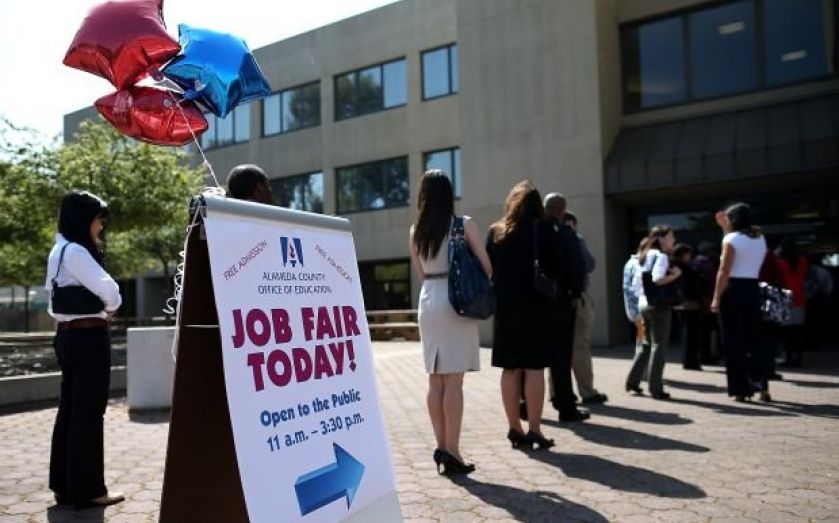US economy adds only 209,000 jobs, unemployment rate rises to 6.2pc

After last month's 288,000-job bonanza, the US economy has only managed to add 209,000 jobs in July.
The headline unemployment rate rose 0.1 percentage points to 6.2 per cent after analysts had predicted it would remain on 6.1. It looked difficult for the labour market to top June's high figures, which meant the year to June was the best 12-month period for the US economy since the crisis.
Today's figures mean their own record, with July being the sixth consecutive month that the economy has added over 200,000 jobs. There will be disappointment at these figures as analysts had been expecting 233,000 jobs.
It was not all doom and gloom: there were revisions to last month's data, with the number of jobs added revised up to 298,000.
All eyes have been on today's numbers after yesterday's Wall Street jitters, brought on by the Fed's indication that it may increase interest rates slightly ahead of expectations.
Today's figures are unlikely to precipitate a rate hike, however, with any rise not expected until late 2015. Below is the headline chart, showing both jobs added (non-farm payroll) and the unemployment rate.

Source: US Bureau of Labor Statistics
From the report:
Both the unemployment rate (6.2 per cent) and the number of unemployed persons (9.7m) remained little changed in July. Over the past 12 months, the unemployment rate and the number of unemployed persons have declined by 1.1 percentage points and 1.7m respectively.
Kit Jukes of Societe General, like many others, was looking out for wage growth:
Employment trends have been less the US' problem than weak productivity and weak real wages. All the anecdotes warn we could get good data. The base effect on wages is friendly.
Real earnings for July aren't available until 19 August, so we'll have to wait.
Despite what seems to be several months of gains, there are two charts that should temper the elation. The one on the left shows the percentage of the over-16 population that is in employment. As we can see it is yet to recover from the crisis.
The second shows the percentage of the employed population in part-time work (classified as under 35 hours a week). As in the UK, there are high numbers of people who would like to do more, but cannot, for economic reasons. This number was stagnant between June and July.
The Bureau of Labor Statistics said in a statement:
The number of persons employed part time for economic reasons (sometimes referred to as involuntary part-time workers), at 7.5 million, was unchanged in July. These individuals were working part time because their hours had been cut back or because they were unable to find a full-time job.
|
|
|

